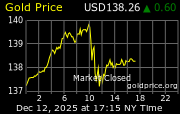
According to the latest CFTC data, released only yesterday due to Friday’s holiday in the US, we are seeing growing investor interest in gold. Silver is also garnering support, but the market still appears weak.
Net speculative length for COMEX gold increased again this past week, with a respectable 73.7 tonnes added. However, unlike in the previous week, the change in the net position
was largely due to speculative longs being added (72.3 tonnes), with only a marginal decrease in speculative shorts (1.4 tonnes).
Given the sustained improvement in the net position (now at 646.2 tonnes), the speculative market is showing a growing confidence in gold’s prospects. ETF buying continues to gain momentum, with 29.0 tonnes added this past week (compared to the 16.8 tonnes added in
the previous week). This brings ETF holdings to 2,390.5 tonnes, within touching distance of this year’s high of 2,406.1 tonnes. The continued ETF support is encouraging, and underscores
the renewed confidence in the gold market.
Our strategic view remains unchanged: gold will push higher in 2012 with a target of $2,000 in Q1:12. Turning to COMEX silver, net speculative length continued to climb, with 150.1 tonnes added over the past week. However, there is still a long way to go to recover from the 3,060.0 tonnes lost previously, so net speculative length currently at 3,008.1 tonnes (compared to the 2010 average of 6,123.3 tonnes) still looks relatively weak. The increase in the net position was equally attributable to a 73.1 tonnes increase in long positions and 77.0 tonnes shed from speculative shorts.
This brings speculative shorts to a total of 997.6 tonnes — now below last year’s average. Market positioning remains weak, but there are growing signs that investors are becoming less bearish on silver. The improvement in ETF holdings was less substantial this week, with only 24.7 tonnes added, compared to the previous week’s gain of 270.9 tonnes. So, while the gains of the
last two weeks are promising, it appears that, while no longer overtly bearish, ETFs remain cautious on silver.
Although market positioning is more encouraging, we also remain cautious of taking any positions in silver just yet.
 After yesterday’s rapid gain, owed in large part to a weaker dollar and improving sentiment, gold has remained largely range bound. PGM ran into selling pressure during the New York trading session, surrendering the gains of the earlier part of the day. However, since then, interest in platinum and palladium has been muted.
After yesterday’s rapid gain, owed in large part to a weaker dollar and improving sentiment, gold has remained largely range bound. PGM ran into selling pressure during the New York trading session, surrendering the gains of the earlier part of the day. However, since then, interest in platinum and palladium has been muted.
































